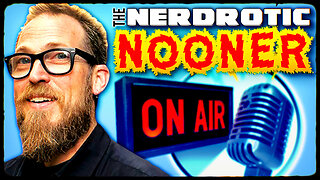Premium Only Content

3. AMBIENT MUSIC , LO-FI
Ambient music is a genre of music that emphasizes tone and atmosphere over traditional musical structure or rhythm. A form of instrumental music, it may lack net composition, beat, or structured melody. It uses textural layers of sound which can reward both passive and active listening and encourage a sense of calm or contemplation. The genre is said to evoke an "atmospheric", "visual", or "unobtrusive" quality. Nature soundscapes may be included, and the sounds of acoustic instruments such as the piano, strings and flute may be emulated through a synthesizer.
The genre originated in the 1960s and 1970s, when new musical instruments were being introduced to a wider market, such as the synthesizer. It was presaged by Erik Satie's furniture music and styles such as musique concrète, minimal music, Jamaican dub music and German electronic music, but was prominently named and popularized by British musician Brian Eno in 1978 with his album Ambient 1: Music for Airports; Eno opined that ambient music "must be as ignorable as it is interesting". It saw a revival towards the late 1980s with the prominence of house and techno music, growing a cult following by the 1990s. Ambient music may have elements of new-age music and drone music, as some works may use sustained or repeated notes.
Ambient music did not achieve large commercial success, being criticized as everything from "dolled-up new age, [..] to boring and irrelevant technical noodling". Nevertheless, it has attained a certain degree of acclaim throughout the years, especially in the Internet age. Due to its relatively open style, ambient music often takes influences from many other genres, ranging from classical, avant-garde music, folk, jazz, and world music, amongst others.
-
 1:49:02
1:49:02
Russell Brand
3 hours agoTrump THREATENS China “NOBODY is getting off the hook” As Trade War INTENSIFIES! – SF565
100K30 -
 1:04:26
1:04:26
Sean Unpaved
3 hours agoRory's Masters Glory!, NBA Play-Ins Preview, Tennessee Moving On From Iamaleava?
20.6K -
 9:00
9:00
Film Threat
3 hours agoWARFARE | Film Threat Reviews
1605 -
 1:04:04
1:04:04
Timcast
3 hours agoDemocrat Governor's Home FIREBOMBED, Liberal's Luigi Mangione Effect Driving INCREASE In Violence
159K139 -
 1:57:44
1:57:44
Steven Crowder
6 hours ago🔴 The Most Un-American School Suspension of All Time & The New Worst City in America
356K267 -
 2:05:42
2:05:42
Nerdrotic
7 hours ago $3.82 earnedHarry Potter Casts BLACK Snape | Dr Who Hits New LOW - Nerdrotic Nooner 479
69.9K30 -
 1:00:38
1:00:38
The Tom Renz Show
2 hours agoMaking Health & Health Freedom a GOP Priority & How Do We Fix Georgia?
36.8K4 -
 49:44
49:44
Kyle Fortch
6 hours ago $0.30 earnedWillie Boy: New Song With Eminem, Collaborating w/ The Game, Dave East & More | THE ONE SHEET S1E12
26.4K -
 1:20:29
1:20:29
Rebel News
2 hours ago $2.24 earnedMontreal cops arrest journalist, Poll shows Cons lead, Poilievre's justice reform | Rebel Roundup
29.5K16 -
 47:28
47:28
The White House
4 hours agoBilateral Meeting with the President of the Republic of El Salvador
54.6K18